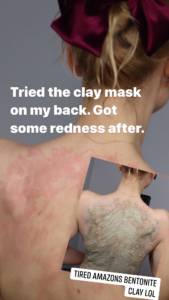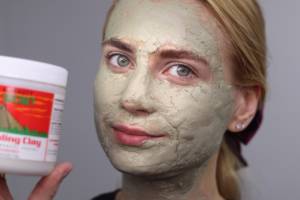Bentonite clay is a natural clay with a fine, soft texture. It forms a paste when mixed with water. Some people use this paste for medical or cosmetic benefits, such as treating rashes and acne or as a hair mask.
Scientists believe that bentonite clay works by adsorbing oils and dirt from the skin.
When a person uses it on the skin, bentonite clay may have the power to adsorb oils and bacteria. When they consume the clay, it may adsorb toxins or other unwanted substances from the digestive tract.

Bentonite clay contains natural minerals such as calcium, magnesium, and iron, which may provide additional benefits.
Bentonite clay forms from volcanic ash. It gets its name from Fort Benton in Wyoming, where it occurs in large amounts. People can also find this clay in other places where volcanic ash has settled into the ground. Montmorillonite clay, named after Montmorillon in France, is the same type of clay.
Bentonite clay’s adsorbent power may be helpful in treating acne breakouts and oily skin. The clay can help remove sebum, or oil, from the skin’s surface, and it may also have a calming effect on inflamed breakouts.
Using a clay face mask can help remove impurities from the skin to treat acne or reduce the risk of pimples and skin infections.
How to use
Many commercial facial masks contain clays because of their clarifying effect on the skin. Some skin care masks contain bentonite, but a person can also make their own bentonite mask at home.
Mix bentonite clay powder with water to make a thick paste. Apply to the areas of skin that are prone to oil or acne. Leave the mask on for 20 minutes and rinse thoroughly. Repeat two or three times per week.
Otherwise, people can choose from a range of premade bentonite clay face masks online.
Many people are allergic to urushiol, the oil that poison ivy plants produce. When their skin comes into contact with poison ivy, they may develop the characteristic rash as an allergic reaction.
A poison ivy rash can cause redness, irritation, and severe itching. A study from 1995 found that bentonite clay can treat poison ivy rash and speed up healing following an allergic reaction.

How to use
Wash the skin with soap and water as soon as possible after touching poison ivy. Use dish soap or a soap designed to remove oils to help remove the urushiol from the skin.
Mix bentonite clay with water to form a paste and apply it to the affected area. Cover with a clean bandage or gauze pad. Repeat several times per day until the rash is gone.
Can be mixed with Apple Cider Vinegar (for not sensitive skin types)


